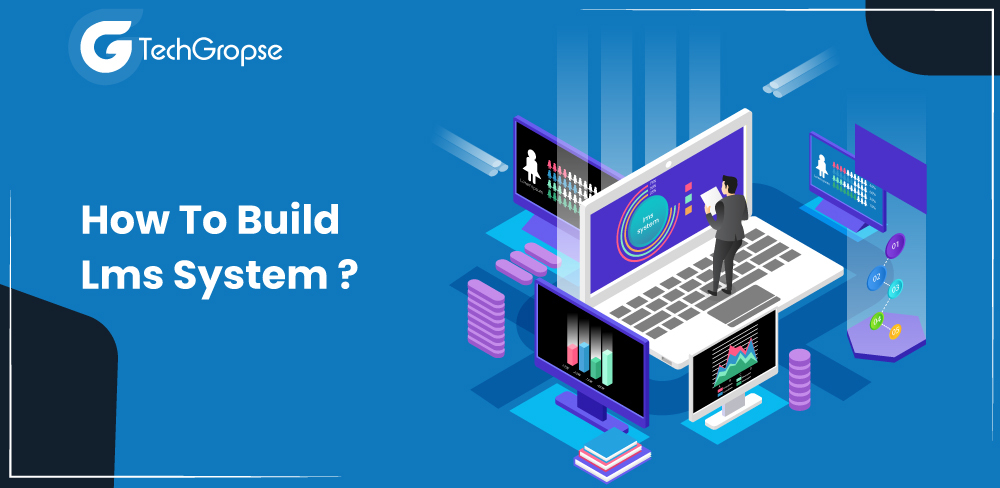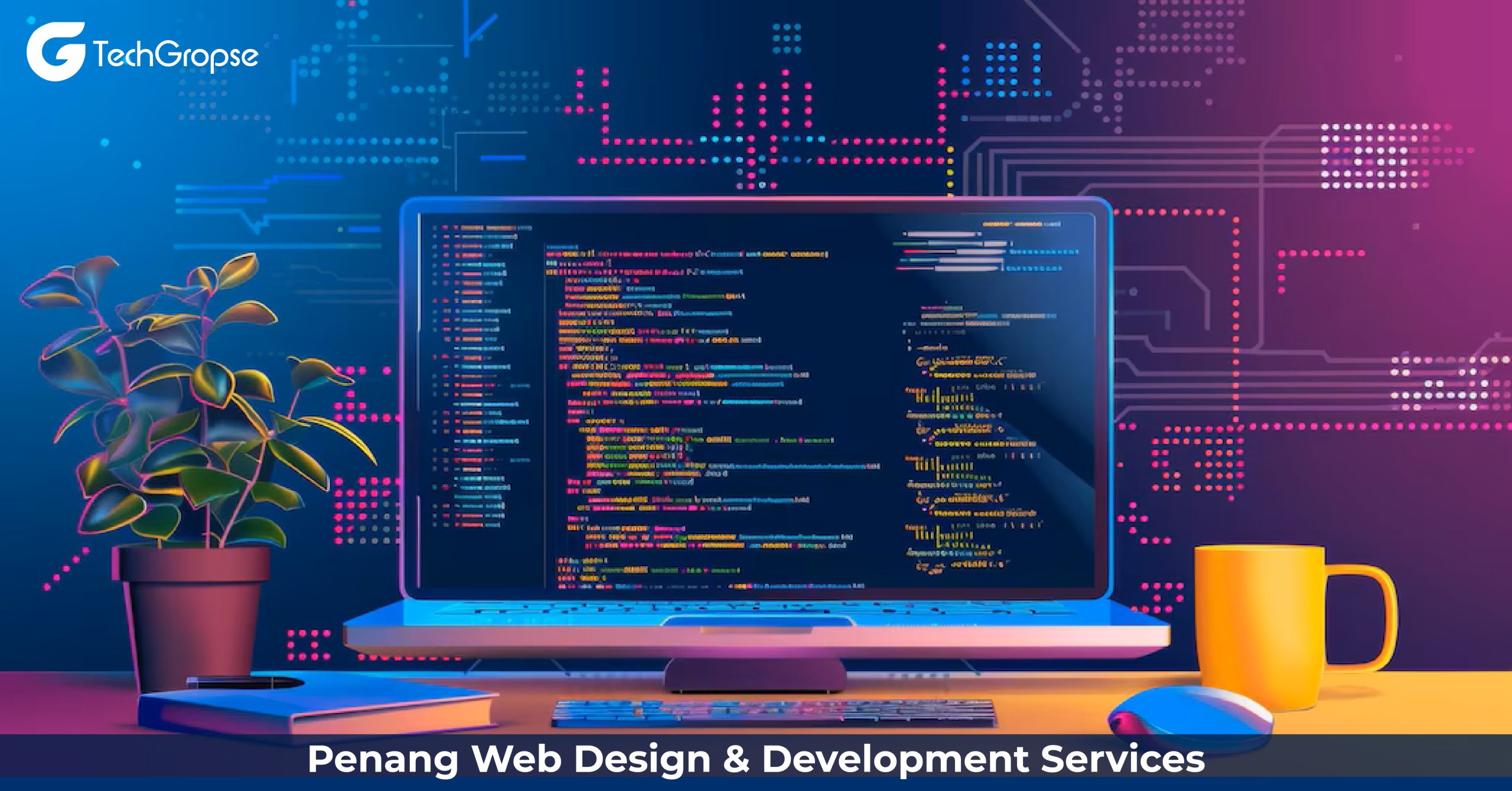Well, the e-learning industry is on a stable rise. That’s why it is unsurprising that companies are eager to deploy learning management systems to make money or utilize them internally to train employees. As a result, it is good to build an LMS system to make money. You know that the best part of such solutions is that lots of companies are using them.
With the help of the learning management system, it is easy to access the course online anytime and anywhere. There are many ways to onboard and train employees. Organizing offline seminars and workshops and delivering lengthy classroom-based training is not always the best way for most employees to learn or improve skills. As a result, LMS development has become more popular.
If you want to make money by building an app, creating an LMS is a great opportunity. However, the question is where to start. Today in this broadcast, we will share the complete procedure to build an LMS system, the features you must include in the system, and many more things you must know before handing over your project to someone else.
Table of Contents
What is a Learning Management System?
A learning management system is an online database that aids in the administration, delivery, and evaluation of instructional materials and courses. It assists teachers, trainers, and administrators to manage, create, and distribute instructional resources to students.
In short, the learning management system is an online classroom where students can access course materials, participate in collaborative activities, turn in assignments, and track their own progress. It offers a well-organized education framework, assisting teachers and students in navigating the learning process.
A learning management system often contains administration, assessment and grading, user management, communication and collaboration tools, as well as reporting capabilities. Teachers are able to upload and organize a variety of assets, such as documents, quizzes, videos, lessons, or modules. Students can then use these resources to participate in complete tasks and class discussions and receive instructor feedback.
Moreover, an LMS software system enables managers to enroll users, track student progress, and plan courses. It offers reporting and analytics options that assist in analyzing things like student involvement, course completion rates, and other performance metrics. As a result, it is good to build LMS system to make more profits.
Types of Learning Management System for Students
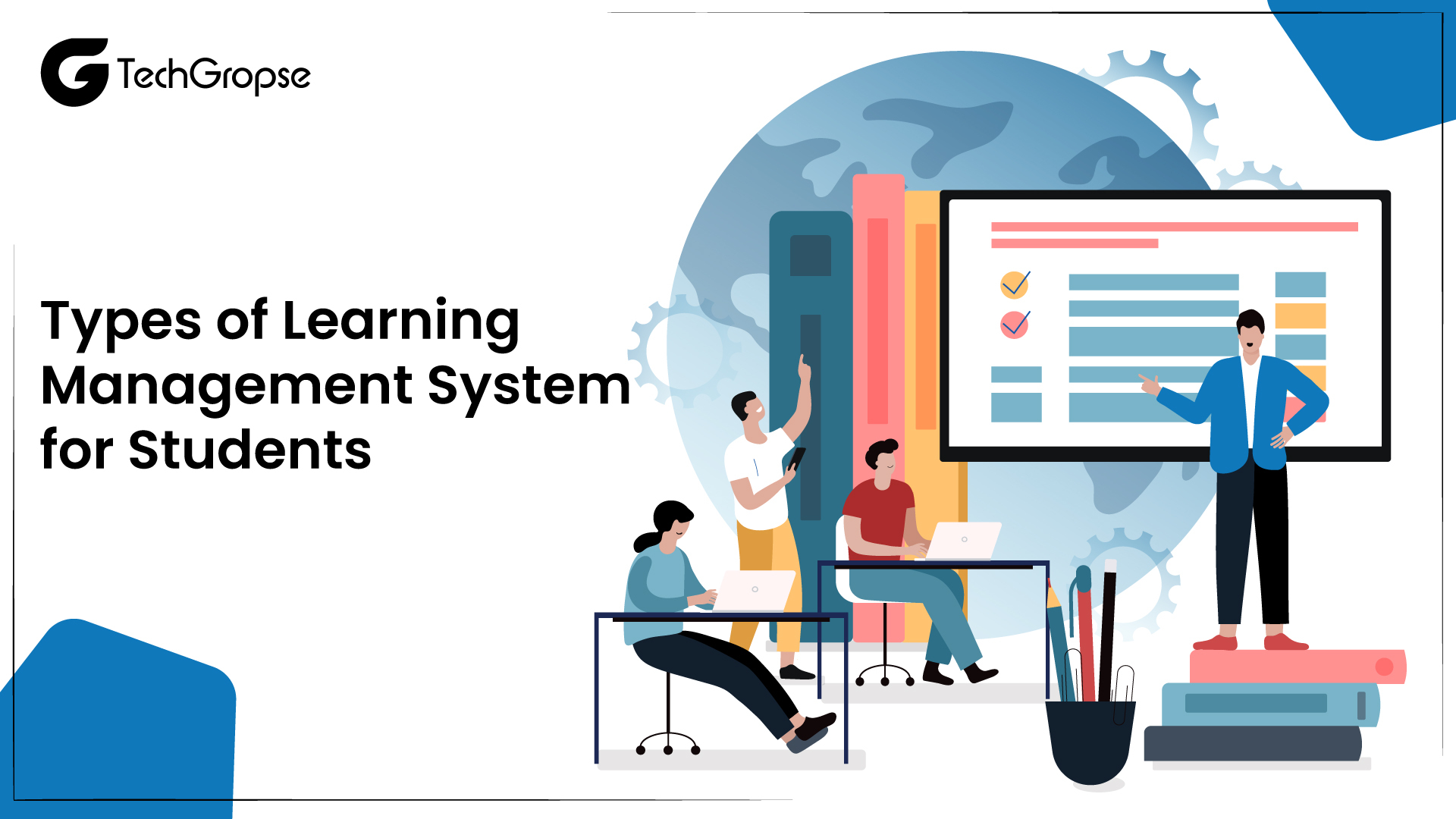
The LMS system has many varieties. If you want to build LMS system, you have to decide the type of system to build a system. For your help, we have listed some types of learning management systems for students below:
1. Cloud-Based LMS
Learning management systems housed in the cloud are accessible from any internet-connected device. You know that cloud-based learning management systems are widely adopted since they are simple to scale, can be accessed from anywhere, and need little to no maintenance. If you want an app that needs low maintenance, this type of software is suitable for you.
In simple terms, you can build LMS system of this type and make money. However, it is suggested to search for skilled and knowledgeable professionals who can easily implement your ideas into reality.
2. Open-Source LMS
Open-source learning management systems can be used without cost and adapted to match individual requirements. They are adaptable and can work with a variety of other systems, although some know-how is usually required for installation and upkeep. There are many open-source LMS like Sakai, OpenEdX, and Moodle. Thus, you can also choose this type to develop a learning management system. This is another type of software to create an LMS.
3. Corporate LMS
Corporate learning management systems are education and training platforms made with businesses in mind. Features like certification administration, performance monitoring, and HR system integration are common in enterprise learning management software. Henceforth, it is a great choice to build LMS system of this type.
In order to make the procedure easier, more convenient, and easier, you can seek the help of an e-learning app development company that will help you ensure the success of the project.
4. Academic LMS
Unlike general LMS, an academic learning management system is designed specifically for use in higher learning environments. They assist educators in the classroom by supporting tools like grade books, online assignments, course schedules, and collaborative platforms. For example, Blackboard, Canvas, Moodle, Edmodo, Sakai, and Scholoolgy are popular academic learning management systems.
5. Mobile LMS
With the increasing number of mobile devices, the requirements for a flexible and user-friendly learning platform have grown. They offer students the opportunity to access course materials and engage in classroom discussions from the comfort of their own smartphones. If you want to build your own software, you can choose this type. It will assist you in ensuring the success of your software. As a result, you can build LMS system of this type.
Features an LMS System Must Have
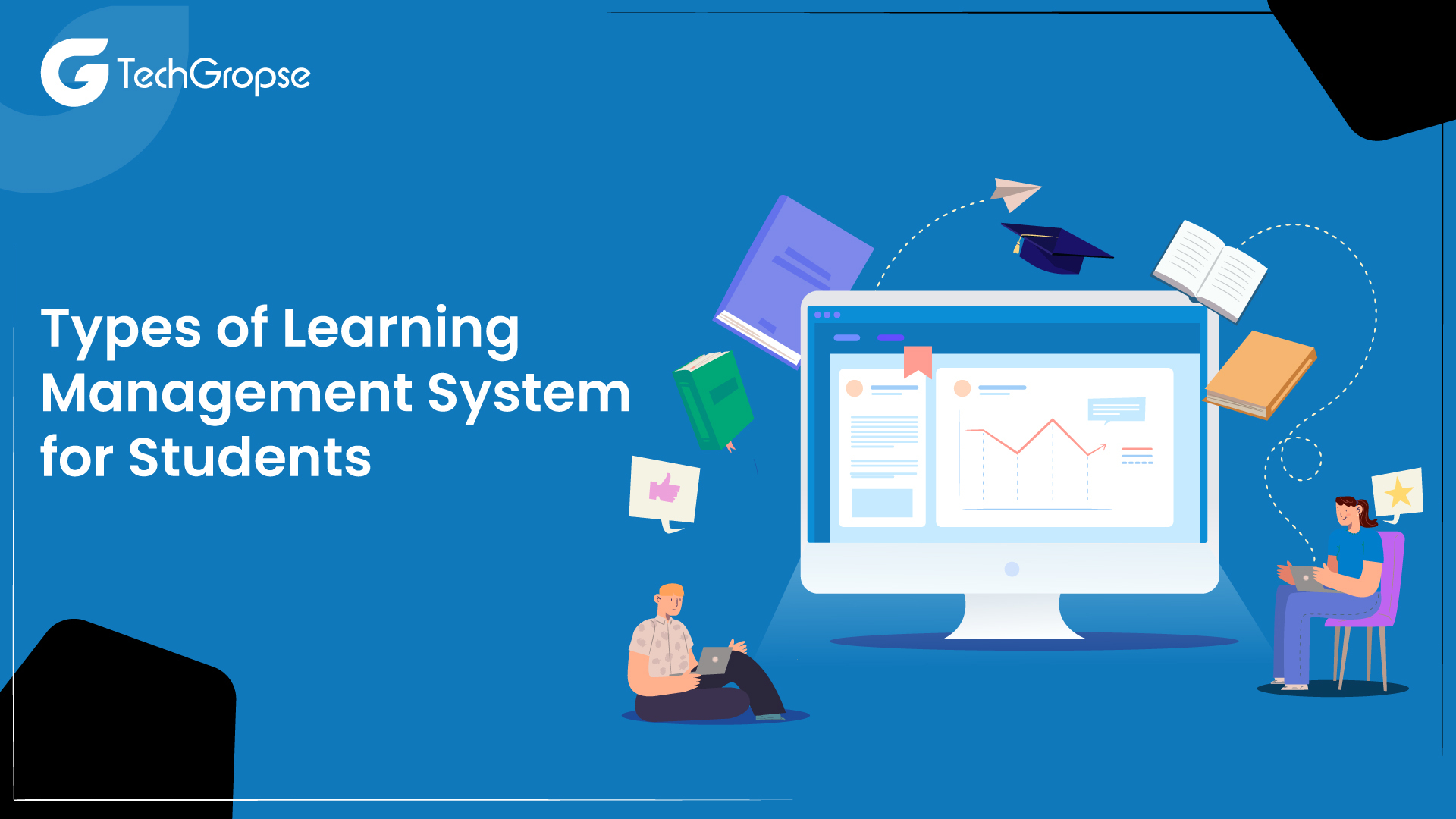
Once you decide to build an LMS system, it is necessary to keep an eye on the features of the application. In this section, let’s delve deeper into the essential features that a learning management system (LMS) must have for a successful and efficient educational experience.
- User-friendly Interface and Navigation
The basis of a successful LMS is the user interface (UI) and navigation.
The clean, intuitive design ensures that users, whether students, instructors, or administrators, can easily navigate the platform. Usability contributes significantly to the overall user experience, reducing learning time and allowing users to focus on educational content instead of fiddling with the system.
So, while deciding to build LMS system, you have to consider this feature that will help you take your business to the next level quickly.
- Course Management and Content Creation Tools
A powerful LMS will allow instructors to create and manage courses seamlessly. Course creation tools should be user-friendly, allowing for easy upload of different content formats, including text, images, video, and interactive elements.
Features like drag-and-drop functionality for uploading content and the ability to schedule courses to improve the efficiency of course creation give instructors the tools they need to organize and deliver exciting content. To implement this feature, you can search for a leading name that will build an elearning app for you. So, you have to make sure that the software is equipped with this feature while deciding to build LMS software.
- Assessment Features
Effective assessment tools are essential for assessing student understanding and progress. The LMS should provide a variety of assessment options, such as quizzes, exercises, and tests. Automated grading mechanisms streamline the assessment process, providing instant feedback to students.
The flexibility of question types (multiple choice, short answer, etc.) allows for diverse and personalized assessments relative to course objectives. As a result, it is necessary to include this feature in your application. In this task, you can also take the help of an on-demand app development company that helps you in every possible way.
- Collaboration and Communication Tools
Learning is not a solitary activity; collaboration and communication are integral to the learning experience. The LMS should integrate discussion forums, messaging systems, and real-time communication tools.
Discussion forums facilitate peer-to-peer interaction and knowledge sharing, thereby fostering a sense of community among learners.
Messaging systems enable direct communication between instructors and students, while video conferencing tools support virtual classes and one-on-one discussions.
- Progress Tracking and Analysis
To improve the learning experience, the LMS must provide robust progress tracking and analysis features. Admins and instructors should have access to detailed dashboards that provide insights into user engagement, completion rates, and assessment results.
Analytics-based decision-making allows for timely intervention and adjustment of course content based on student learning outcomes, thereby improving the overall effectiveness of the learning experience.
- Mobile Compatibility and Offline Access
In the age of mobile learning, a modern LMS must be compatible with a variety of devices. Native mobile apps or responsive design principles should be used to ensure seamless access on smartphones and tablets.
Additionally, offline learning capabilities are essential, allowing learners to download course materials for access in areas with limited Internet connectivity. This feature promotes flexibility and accessibility in the learning process.
- Gamification Elements
To improve engagement and motivation, gamification elements should be integrated into the LMS. Features like badges, points, and leaderboards create a competitive and rewarding learning environment. Gamification makes the learning experience enjoyable and stimulates active participation, encouraging learners to strive for achievements and progress.
- Security and Compliance Measures
Ensuring the security of user data is paramount in an LMS. Robust user authentication and authorization mechanisms should be in place to protect sensitive information. Encryption protocols (SSL/TLS) should be utilized for secure data transmission.
Regular security testing and updates are essential to strengthen your LMS against emerging threats. Additionally, compliance with accessibility standards (WCAG) ensures inclusivity and serves users with disabilities. If you find it difficult to implement this feature on your own, you have to search for a leading mobile app development company that helps you in making an app.
Step-by-Step Guide to Build LMS System
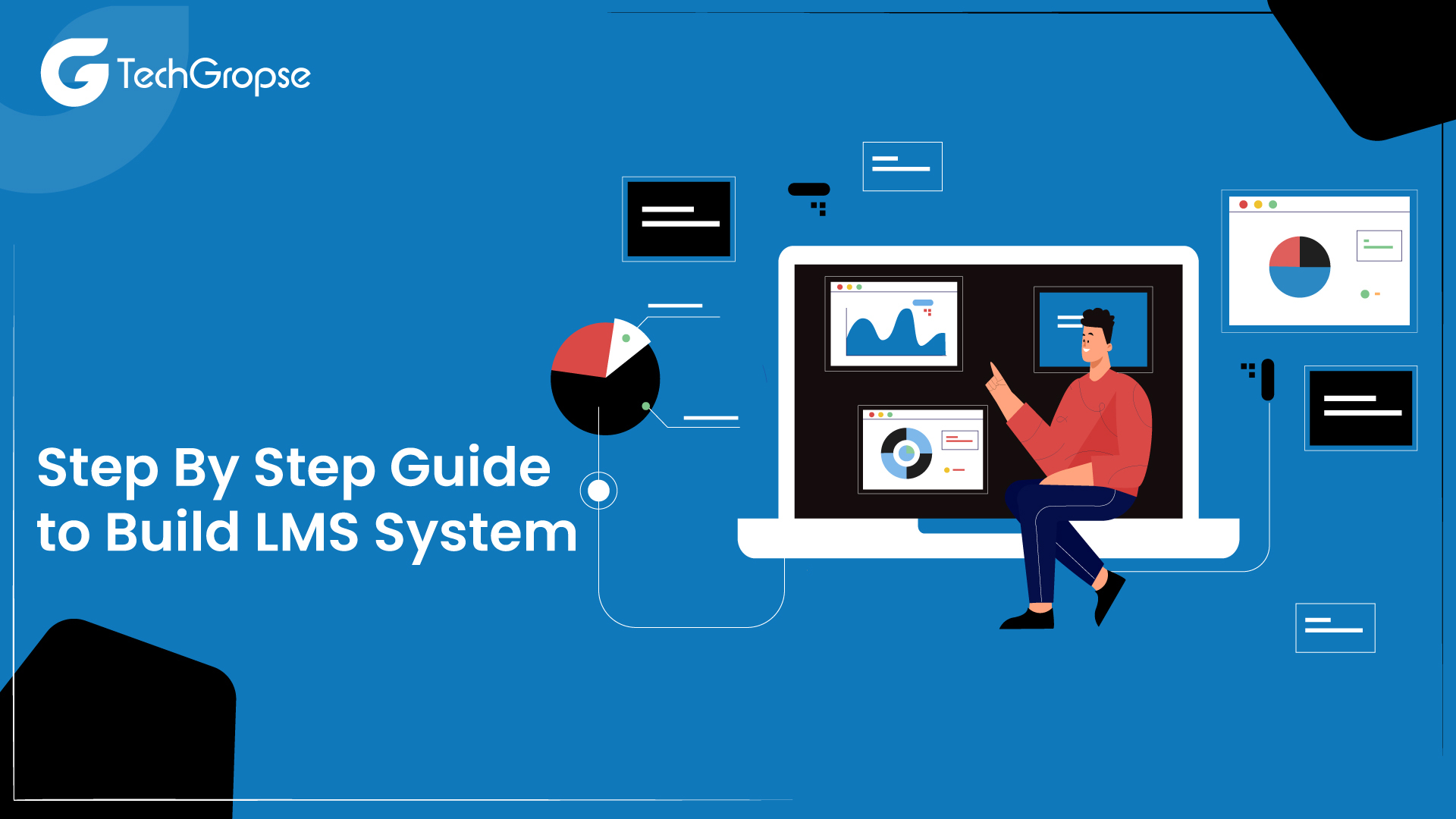
Once you know which features you have to include in your application, it’s time to start the development procedure. Below, we list out the step-by-step guide to build LMS System:
Step 1: Define Goals and Scope
The first step in creating an LMS is clearly defining your goals and scope. Determine your target audience, the type of courses you plan to offer, and the desired features of your LMS.
Determine whether your LMS will target academic institutions, corporate training, or a combination of both. Clearly defining your goals will guide the entire development process.
Step 2: Choose the Right Technology Stack
Choosing the right technology stack is critical to the success of your LMS. Consider factors like scalability, security, and compatibility. Popular choices include using programming languages like Python or Ruby, frameworks like Django or Ruby on Rails, and reliable database systems like MySQL or MongoDB.Choose a stack that suits your project’s requirements and your development team’s expertise.
Step 3: User Interface (UI) and User Experience (UX) Design
Your LMS design plays a central role in user interaction. Develop an intuitive user interface for easy navigation. Consider responsive design principles to ensure a seamless experience across all devices.
Create wireframes and prototypes to visualize user journeys and gather feedback from potential users. Prioritize a neat, user-friendly design that attracts both teachers and learners.
Step 4: Perform Basic Functions
a.User Authentication and Authorization
Implement a secure user authentication system to verify user identity. Integrate role-based access control to set different access levels for administrators, instructors, and students.
b.Course Creation and Management
Develop tools that enable instructors to create and manage courses effectively. Includes features like drag-and-drop content uploads, scheduling tools, and support for different content formats (text, images, video).
- Assessment
Integrates assessment tools that allow instructors to create quizzes, exercises, and tests. Implement an automatic scoring mechanism and support different question types to diversify assessments.
d.Collaboration and Communications
Integrates discussion forums, messaging systems, and video conferencing tools to promote collaboration among learners and facilitate communication between instructors and students.
- Progress Tracking and Analytics
Implement tools to track user progress, engagement, and performance. Provides detailed analytics dashboards for administrators and instructors to evaluate course effectiveness.
- Mobile Compatibility
Make sure your LMS is compatible with a variety of devices. Develop native mobile apps or apply responsive design principles to optimize learning experiences on smartphones and tablets.
Step 5: Testing and Quality Assurance
Thoroughly test your LMS to identify and resolve any errors or problems. Perform usability testing to ensure a seamless user experience. Perform security checks to protect user data. Regularly update and maintain your system to address emerging issues and improve overall performance.
Step 6: Implementation and Continuous Improvement
Once testing is complete, launch your LMS and provide training sessions to administrators, instructors, and users. Establish clear documentation and support channels to help users navigate the platform. Collect feedback from users and stakeholders to identify areas for improvement. Update your LMS regularly to introduce new features, improve security, and meet changing educational needs.
The Last Summary
Learning management systems make accessing the pool of courses, learning resources, and books easier. But when it comes to build LMS system, it is necessary to have knowledge of every aspect. Having an excellent knowledge of the technology and tech stack, it is good to build an LMS system.
If you don’t have the knowledge and skill set, it is good to search for a leading mobile development company that will assist you in building a functional app. A leading company never compromises on the quality of the project and gives detailed information about mobile app development cost.
FAQs
1. What is LMS?
A learning management system is a software application that supports the management, documentation, tracking, and reporting of training programs, courses, or learning and development programs.
2. Should I build from scratch or use an existing LMS?
It depends on your resources, time, and specific needs. Building from scratch offers customization but requires more time and expertise. Using an existing platform can save time, but customization may be limited.
3. What are the main characteristics of an LMS?
Key features include course creation, user management, content delivery, assessments, reporting, and the ability to integrate with other systems.
4. How do you choose the right technology for an LMS?
Consider factors such as scalability, security, user interface, and the specific needs of your users. Popular technologies include:
- Backend languages (e.g., Python, Ruby, PHP).
- Front-end frameworks (e.g., React, Angular).
- Databases (e.g., MySQL, PostgreSQL)

Hello All,
Aman Mishra has years of experience in the IT industry. His passion for helping people in all aspects of mobile app development. Therefore, He write several blogs that help the readers to get the appropriate information about mobile app development trends, technology, and many other aspects.In addition to providing mobile app development services in USA, he also provides maintenance & support services for businesses of all sizes. He tried to solve all their readers’ queries and ensure that the given information would be helpful for them.







































































































